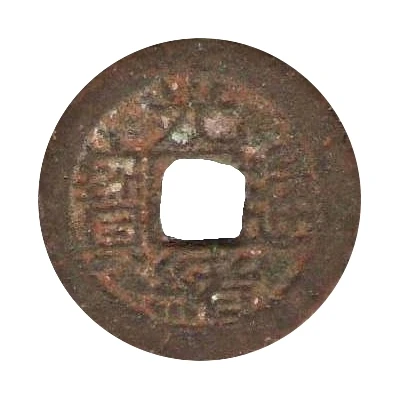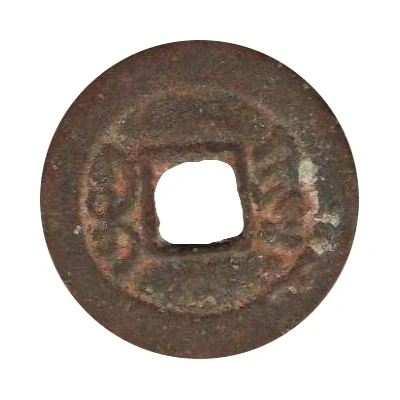


© bbybugs (CC BY-NC-SA)
1 Cash - Guangxu Tongbao; Boo-kiyan; with dot ND
| Brass | - | 22 mm |
| Issuer | Empire of China |
|---|---|
| Emperor | Qing dynasty › Guangxu (光緒帝) (1875-1908) |
| Type | Standard circulation coin |
| Years | 1887-1908 |
| Value | 1 Cash |
| Currency | Cash (621-1912) |
| Composition | Brass |
| Diameter | 22 mm |
| Shape | Round with a square hole |
| Technique | Cast |
| Orientation | Medal alignment ↑↑ |
| Demonetized | Yes |
| Updated | 2024-10-04 |
| Numista | N#48839 |
|---|---|
| Rarity index | 82% |
Reverse
Two Manchu words (read vertically) separated by the hole, all with dot at various locations.
Script: Mongolian / Manchu
Lettering: ᠪᠣᠣ ᡴᠶᠠᠨ᠋
Translation: Boo-kiyan
Edge
Plain
Comment
The exact years of operation are unknown, but with most mints around this area opening around 1887, that is likely the earliest date.Interesting fact
One interesting fact about the Standard circulation coin 1 Cash - Guangxu (Tongbao; Boo-kiyan; with dot) ND (1887-1908) from Empire of China made of Brass is that it was designed by a French engraver named Jean-Antoine Bovy, who was commissioned by the Chinese government to create a new coinage system for the country. Bovy's design featured a unique blend of traditional Chinese and Western elements, and the coin was minted in several different varieties, including the "dot" variety, which features a small dot on the reverse side. This coin is considered a rare and valuable collector's item today, with some mint conditions selling for thousands of dollars.